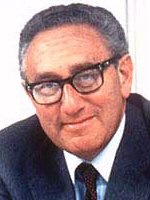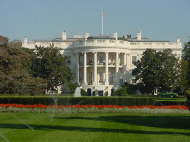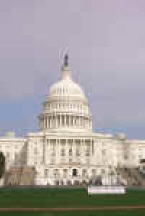Multiple Choice
Identify the
choice that best completes the statement or answers the question.
|
|
|
Richard Nixon came to the office of President vowing to help heal the deep divisions
and social conflicts of the 1960’s. He wanted to bring America together. In some ways he did
help to heal the divisions of the 1960’s and in other ways he did not.
It was November
of 1968 and Richard M. Nixon had just been elected president of the United States . President-elect
Nixon asked Henry Kissinger to be his special adviser on foreign affairs . Kissinger did not
particularly like Nixon, but he accepted, telling a surprised colleague, "I'm working for
the presidency, not for Richard Nixon personally." However, in time the two men grew to be
trusting colleagues . At the beginning of Nixon's second term in 1972, as the United States
struggled to achieve an honorable peace in Vietnam, Kissinger finally came to respect Nixon for his
vision and the two men did a great deal to promote world peace. They ended the Vietnam War and laid
the foundation for the end of the cold war.
Nixon and Kissinger ended America's
involvement in Vietnam. As the war wound down, the nation seemed to enter an era of limits . There
were limits to U.S . power, as the nation's military had not been able to save South Vietnam
from becoming Communist . Lyndon Johnson's Great Society programs seemed limited in their
ability to eliminate poverty. And as the 1970s progressed, there seemed to be limits to the economic
prosperity that the nation had experienced since World War II .
Into this era stepped a
president who believed that there were also limits to what the federal government could accomplish.
President Nixon would take action to reduce the power of the federal .government (the U.S.
government) and reverse the liberal policies of Lyndon Johnson. At the same time, he would seek to
restore America's prestige and influence on the world stage-prestige that had been hit hard by
the Vietnam experience .
| 
Richard
Nixon

Henry
Kissinger | | |
|
|
|
1.
|
What job did Henry Kissinger do
for Richard Nixon?
a. | Secretary of the
Treasury | c. | Presidential
Secretary | b. | Chairman of the Joint Chiefs of Staff | d. | Special advisor on foreign
affairs |
|
|
|
2.
|
Which president ended the
Vietnam War?
a. | Lyndon
Johnson | c. | Henry
Kissinger | b. | Richard Nixon | d. | John Kennedy |
|
|
|
3.
|
Which statement is
true?
a. | Richard Nixon tried to expand the
Great Society programs started by President Johnson | d. | Richard Nixon worked to make the U.S. government
bigger | b. | Richard Nixon realized there were limits on what the government could do and
tried to limit the growth of Great Society programs | e. | None of these statements are true | c. | Richard Nixon did not care about domestic policies
|
|
|
|
4.
|
Which statement is
true?
a. | The United States was able to
prevent Vietnam from uniting under communism | d. | none of these statements are true | b. | The United States was able to prevent South Vietnam from
becoming communist | e. | all of these statements are
true | c. | In spite of the efforts of the United States, all of Vietnam became
communist |
|
|
|
Nixon's New
Conservatism
A liberal
can be described as someone who is in favor of a bigger central government. A conservative is someone
who favors a smaller central government with more power going to the states and local communities.
President Richard M. Nixon entered office determined to turn America in a more conservative direction
. Toward that end, he decreased the power of the federal government, dismantled a number of Great
Society programs, and tried to instill a sense of order into a nation still divided over the
continuing Vietnam War.
| |
|
|
|
5.
|
Richard Nixon was a _____ while
Lyndon Johnson was a _____ .
a. | conservative -
liberal | c. | liberal -
liberal | b. | liberal - conservative | d. | conservative -
conservative |
|
|
|
6.
|
Conservatives think the Federal
(U.S.) government should be
a. | bigger | c. | about the same size | b. | smaller | d. | not an issue for conservatives |
|
|
|
NEW FEDERALISM'S TWO FACES
In
the end, Nixon's New Federalism enhanced several key federal programs as it dismantled others .
Nixon was a Republican and the Congress was controlled by the Democrats. With the House and Senate in
the hands of Democratic majorities, Nixon initially sought compromise on Capitol Hill as he attempted
to move ahead with his New Federalism program. For example, Nixon supported a number of measures to
increase federal spending for some social programs. Without fanfare, the Nixon administration
increased Social Security, Medicare, and Medicaid payments and made food stamps more accessible.
Nixon also supported subsidized housing for low- and middle-income families, and he expanded the
nation's job Corps program. Because he performed these actions quietly, he did not receive much
credit for these attempts to help the poor.
However, the spirit of compromise between Congress
and the White House soon deteriorated. Confronted by laws that he opposed, Nixon turned to a
little-used presidential practice called impoundment. Nixon impounded, or refused to spend
money for programs he opposed, thus holding up their implementation . By 1973, Nixon had impounded
almost $15 billion, affecting more than 100 federal programs, including those for health, housing,
and education.
The federal courts eventually ordered the release of the impounded funds. They
ruled that presidential impoundment was unconstitutional and that only Congress had the authority to
decide how federal funds should be spent. However, in 1973 Nixon did use his presidential authority
to abolish the Office of Economic Opportunity, a cornerstone of Johnson's antipoverty
program.
| The white house (the president) and the congress.
Two branches of government that are sometimes in conflict with each other over
issues

The White House (President)

The Capital Building
(Congress) | | |
|
|
|
7.
|
Which statement is
true
a. | Nixon tried to compromise with
congress by expanding many social welfare programs | c. | Nixon did not need to compromise with congress because he was a Republican and
the Republicans controlled congress | b. | Nixon made no attempt to compromise with
congress | d. | Nixon was a Democrat and the
congress was controlled by the Republicans |
|
|
|
8.
|
Why didn’t Nixon receive
credit for his attempts to increase social welfare programs and help the poor?
a. | Nixon did not do anything to help
the poor | c. | Nixon worked
quietly to help the poor | b. | Nixon was not good on TV | d. | None of these are true |
|
|
|
9.
|
When congress passed laws that
President Nixon did not agree with, he just refused to spend the money so the laws never went into
effect. What was this tactic called?
a. | rescission | c. | filibuster | b. | impoundment | d. | veto |
|
|
|
LAW-AND-ORDER POLITICS
As
President Nixon fought with Congress, he also battled the more liberal elements of society, including
the antiwar movement. Nixon had been elected in 1968 on a dual promise to end the war in Vietnam and
mend the divisiveness within America that the war had created. Throughout his first term, Nixon
aggressively moved to fulfill both these pledges. The president de-escalated America's
involvement in Vietnam and oversaw peace negotiations with North Vietnam. At the same time, he began
the "law and order" policies that he had promised his "silent majority"-those
middle-class Americans who wanted order restored to a country beset by urban riots and antiwar
demonstrations .
To accomplish this goal, Nixon used the full resources of his
office-sometimes illegally. The FBI illegally wiretapped numerous left-wing individuals and
organizations. The FBI also infiltrated the ranks of the Students for a Democratic Society and
radical African-American groups in an effort to spread conflict within the
organizations.

Vice
President Spiro Agnew | 
In addition, the CIA investigated and compiled
documents on thousands of American dissidents-people who objected to the government's policies .
The administration even used the Internal Revenue Service to audit the tax returns of antiwar and
civil rights activists. Viewing his opponents as personal assailants, Nixon began building an
"enemies list" of prominent Americans whom the administration would harass . Remarked a top
White House official, "anyone who opposes us, we'll destroy."
Nixon also
enlisted the help of his combative vice-president, Spiro T. Agnew. In the fall of 1969, Nixon sent
Agnew on a public speaking tour to attack the opposition . The vice-president repeatedly denounced
the antiwar protesters and then turned his scorn on those who controlled the media, whom he viewed as
liberal cheerleaders for the antiwar movement. Known for his colorful quotes, Agnew lashed out at the
media and liberals as "an effete [weak] corps of impudent snobs," and
"nattering nabobs of negativism ." | | |
|
|
|
10.
|
What two promises did Nixon
make when he became president?
a. | Continue the Great Society programs
of the Johnson administration and end the war in Vietnam | c. | End the war in Vietnam and build-up the American
military | b. | Make the government bigger and heal the problems in American
society. | d. | End the war in Vietnam and heal the
divisions in American Society by bringing the people
together. |
|
|
|
11.
|
Who was the “silent
majority?”
a. | the majority of Americans who did
not protest the war or riot, and wanted law and order in American
society. | c. | the majority of
the Anti-war movement who wanted to take a more violent approach in their
protests | b. | the majority of the civil rights movement who wanted the movement to be more
confrontational (violent) | d. | the young people in
America |
|
|
|
12.
|
Nixon set out to infiltrate,
undermine and destroy the anti-war movement in America. Which government agency did he use to achieve
this goal?
a. | CIA | d. | all of these agencies | b. | FBI | e. | none of these agencies | c. | IRS |
|
|
|
13.
|
Nixon believed that the liberal
news media (TV, Newspapers and magazines) were supporting the anti-war movement. What did Nixon do to
combat the liberal news media?
a. | He remained quiet on the
issue | c. | He tried to jail the major liberal
publishers | b. | Sent Vice President Agnew to attack the liberal
media. | d. | He tried to make friends with the liberal
media |
|
|
|
Nixon's Southern
Strategy
Even as President
Nixon worked to steer the country along a more conservative course, he had his eyes on the 1972
presidential election. Nixon had won a slim majority in 1968-less than one percent of the popular
vote . Shortly after entering the White House, he began working to forge a new conservative coalition
to build on his support. In one approach, known as the Southern strategy, Nixon tried to attract
Southern conservative Democrats by appealing to their unhappiness with federal desegregation policies
and a liberal Supreme Court.
|
|
|
14.
|
In the Southern Strategy, Nixon
tried to get unhappy Southern Democrats to turn Republican so he would get more votes in the next
election in 1972. What were the Southern Conservative Democrats unhappy about?
a. | too much
welfare | c. | desegregation and
liberal Federal courts | b. | the Vietnam war | d. | segregation and voting rights |
|
|
|
A NEW
SOUTH
Since Reconstruction, the South had been a Democratic
stronghold . But by 1968 many white Southern Democrats had grown disillusioned with their party. In
their eyes, the party champion of the Great Society and civil rights-had grown too liberal. -`This
conservative backlash first
surfaced in the 1968 election, when thousands of Southern Democrats helped former Alabama governor
George Wallace, a conservative segregationist running as an independent, carry five Southern states
and capture 13.5 percent of the popular vote.
Nixon wanted these voters . By winning over the
Wallace voters and other discontented Democrats, the president and his fellow Republicans hoped not
only to keep the White House but also to recapture a majority in Congress .
NIXON
SLOWS INTEGRATION
To attract white voters in the South, President Nixon decided on a
policy of slowing the country's desegregation efforts . In September of 1969, shortly after
being elected president, Nixon made clear his views on civil rights ."There are those who want
instant integration and those who want segregation forever. I believe we need to have a middle course
between those two extremes," he said.
|
|
|
15.
|
What was Nixon’s view on
racial integration?
a. | He believed we should have
integration but it should move more slowly. | c. | He believed we should have integration right
away. | b. | He was against racial integration | d. | He believed that the civil rights movement was part of a communist
plot |
|
|
|
16.
|
The southern Democrats who
became unhappy with the Democrat party because of the liberal direction of the government became
known as the ______
a. | Great
Society | c. | civil rights
movement | b. | Johnson Democrats | d. | conservative backlash |
|
|
|
Throughout his first term,
President Nixon worked to reverse several civil rights policies. In 1969, he ordered the Department
of Health, Education, and Welfare (HEW) to delay desegregation plans for school districts in South
Carolina and Mississippi . Nixon's actions violated the Supreme Court's second Brown v.
Board of Education ruling-which called for the desegregation of schools "with all deliberate
speed." In response to an NAACP suit, the high court ordered Nixon to abide by the second Brown
ruling . The president did so and by 1972, nearly 90 percent of children in the South attended
desegregated schools, up from about 20 percent in 1969.
Nixon also opposed the extension of the Voting Rights Act of 1965. The act
had added nearly one million African Americans to the voting rolls. Despite the president's
opposition, Congress voted to extend the act.
|
|
|
17.
|
Which statement is
true?
a. | Nixon supported almost all of the
civil rights goals of the NAACP | c. | Nixon thought the civil rights movement was part of a communist
plot | b. | Nixon tried to delay the enforcement of civil rights laws to attract Southern
white voters to the Republican party | d. | Nixon tried to delay the encforcement of civil rights laws to attract Southern
white voters to the Democrat party |
|
|
|
18.
|
In the 1960’s less than
20% of African American kids in the south attended integrated schools. By 1972 _____ of African
American kids attended integrated schools in the south.
|
|
|
19.
|
How many African Americans were
added to the voting roles by the Voting Rights Act in the early seventies?
a. | about 1
million | c. | about 10
million | b. | about 5 million | d. | 90% of African Americans |
|
|
|
President Nixon then attempted
to thwart yet another civil rights initiative-the integration of schools through busing. In 1971, the
Supreme Court ruled in Swann v. Charlotte-Mecklenburg Board of Education that school districts may
bus students to other schools to end the pattern of all-black or all-white educational institutions .
Busing meant removing students from their home schools and sending them across town to other schools
in order to integrate. White students and parents in cities such as Boston and Detroit angrily
protested busing. They did not want their children removed from their neighborhood schools and sent
to inner-city schools across town. South Boston became the scene for many protests that were
televised across the country. Busing was very unpopular with the American
people.
Nixon also opposed
integration through busing and went on national television to urge Congress to halt the practice .
While busing continued in some cities, Nixon had made his position clear to the country-and to the
South
.
|
|
|
20.
|
Which statement is
true?
a. | Bussing meant transferring students
from their home schools to schools in other parts of the city | d. | all of these statements are
false | b. | The purpose of bussing was to integrate schools that were “all
white” or “all black” | e. | all of these statements are true | c. | The Supreme court ordered bussing, in spite of the fact
that most Americans opposed it. |
|
|
|
21.
|
Nixon’s position on
bussing made him ______ in the south.
a. | popular | c. | neutral on busing | b. | unpopular | d. | none of these statements are
true |
|
|
|
22.
|
Liberals were _____ of bussing,
while conservatives were _____ busing.
a. | against - in favor
of | c. | against -- neutral
on | b. | in favor -
against | d. | neutral on -
against |
|
|
|
23.
|
Only the south was opposed to
bussing. The north accepted it.
|